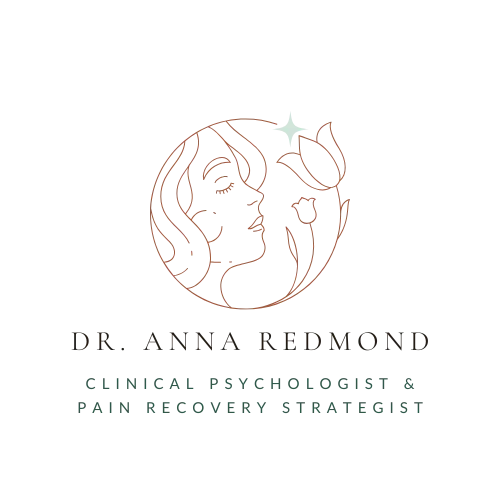Connect with me!
Tell me the number one thing that you want to understand about your pain?

Is it time to visit your mechanic?
Do these sound familiar?
You have wear and tear
You have a muscle imbalance
Your hips are out of alignment
Your MRI revealed degenerative changes
You have a bulging disc
Identifying a mechanical dysfunction in the body is how the medical system has long tried to approach the problem of chronic pain. Find the problem area, replace or fix the part, pain will subside. This works so well… with acute pain such as a broken arm. But, it is a very simplistic view of chronic pain, outdated when used alone, and it causes distress for the person experiencing chronic pain. Why? Because your mind-body vehicle is not like a car.
Addressing pain is more complex than visiting your mechanic for a fix or a part replacement.
Let’s pick one of the statements above. “Your MRI revealed degenerative changes”. Did you know that two people, with similar MRI’s, both with signs of arthritis, could have vastly different experiences. One person could be playing at the height of their basketball career and the other could be down for the count due to severe knee pain.
What accounts for this difference in experience?
Context. The brain. Thoughts. Emotions. Experiences. So. Many. Things.
Remember biopsychosocial model that we’ve talked about before? The idea that pain exists in the overlap between many biological, psychological, and social/contextual factors. All of these parts are so important when trying to understand your pain. The biological part is important and encompasses a lot, including tissue damage, your genetic predispositions, anatomical issues, nutrition, sleep, movement/exercise, and system dysfunction or dysregulation. I don’t think you’ll find one pain provider or educator that denies that the biomedical domain of understanding pain is important.
Then we’ve got the psychological domain, which is inclusive of so many things it deserves it’s own blog post. This domain acknowledges the emotions, thoughts, beliefs, memories, coping behaviors, feelings/experiences of safety (or danger), and other psychological phenomena. As a pain psychologist, some might assume that I only “fix” emotional pain. There is inherent error in this assumption, because pain is not one thing. It is not physical OR emotional. It is always, every time, all of the time, BOTH.
We can actually see this at play in functional MRI’s, which show how long-standing chronic pain lights up the same areas of the brain as those involved in emotional experiences. The experience of chronic pain in our brain doesn’t just live in our sensory cortex (the area of the brain responsible for handling sensory input from our body) like we’d think. Chronic pain is processed through the limbic system, the area of our brain also responsible for processing our emotions. So even if we wanted to pretend our emotions, thoughts, and pain memories don’t impact our experience of pain, we can’t. There are functional MRI’s and decades of pain research that we would have to contend with.
The last domain, the social domain, is extensive. This domain accounts for your environment, family system, ethnicity, race, religion. The social domain acknowledges the impact of work or loss of work, the responses from your spouse and family members to your pain, or even how your family responded to pain growing up, for example. The social domain is your larger context.
I think that the best thing about thinking about your pain as biopsychosocial, is that you now have a long list of possible factors that you can personally identify as impacting your pain experience positively or negatively.
When we limit our perspective of pain to biological, mechanical, biomedical, we just don’t get that.
Pain is more than just mechanical. This is the second building block of my educational approach.
Remember the first building block? My pain is real. My pain is personal. My pain is multidimensional.
So instead of thinking of your body as a car with broken parts, think about your body as a car with four flat tires. One tool or approach is only going to pump up one tire full of air. It will still render you unable to drive or go anywhere. Have any of your past treatments alone given you more than 25% long-term relief? Because your pain is unique and multifaceted, the combination of factors that impact you, treatments, therapies, or tools is also going to be multifaceted and unique to you.
Education provides the power to take the next step in managing your pain. You want to do the things you enjoy (or even basic daily activities) without flaring up your pain. For a limited time, you can grab my free video tutorial to get you started:
3 Simple Steps to a Balanced Day... Without the Flare-Ups.
This free video tutorial is dedicated to helping women with pain begin to find confidence to return to the moments, activities, and people they love the most.
I totally get it. This sounds like hard work after years of hard work, time, and money invested in feeling better. Breathe with me, my friend. It just so happens that I have a way of putting education into small, digestible pieces that will fit easily into your everyday life. You can find this education in multiple formats here and more on this topic on my instagram page.
Let’s figure out how to take everyday moments and turn them into moments of healing.
References:
Gatchel, R. J., & Maddrey, A. M. (2004). The biopsychosocial perspective of pain. In J. M. Raczynski & L. C. Leviton (Eds.), Handbook of clinical health psychology: Vol. 2. Disorders of behavior and health (pp. 357–378). American Psychological Association.
Melzack R. Pain and the neuromatrix in the brain. J Dent Educ. 2001 Dec;65(12):1378-82.
© 2024 | Anna Redmond, LLC | drannaredmond.com
